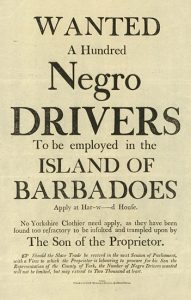
Estudiantes de español, ¿conocen el terror que sienten cuando tienen que pronunciar palabras con la “r” o la “rr”? ¿Palabras como ferrocarril, guitarra y rodilla? Hasta los hispanohablantes nativos temen cuando un párrafo tiene muchas “r” o “rr”. No importa cuántas clases y práctica tengamos, todos hemos batallado en pronunciar algunas de estas palabras, y pensamos que somos terribles en el español. Pero para los hablantes no nativos, la dificultad de poder producir la “r” y la “rr” es más alta. Aunque el sonido de la “r” existe en el lenguaje inglés, el de la “rr” no existe, lo cual les hace muy difícil a los hablantes no nativos poder producir palabras con la “rr”. ¡Pero no se preocupen! ¡Ustedes no están solos en este desorden! Únanse a JoAnna y Sarah en aprender de los horrores de la “r” y “rr”. Vamos a explorar las vibrantes “r” y “rr” y por qué son tan difíciles de pronunciar, para así superar el miedo.
Referencias
Erichsen, G. (2019, February 4). Pronouncing the “r” in Spanish. ThoughtCo. https://www.thoughtco.com/pronouncing-the-r-3079556
Face, T. L. (2006). Intervocalic rhotic pronunciation by adult learners of Spanish as a second language. In C. A. Klee & T. L. Face (Eds.), Selected proceedings of the 7th conference on the acquisition of Spanish and Portuguese as first and second languages (pp. 47-58). Cascadilla.
Fesliyan Studios. (2021, February 23). Fantasy ambience. Royalty Free Music https://www.fesliyanstudios.com/royalty-free-music/downloads-c/scary-horror-music/8?msclkid=3ca15ee7c7c311ec8d05fa211a490c2e
Free Sounds Library. (n.d.). Wolf howling sound effect. https://www.freesoundslibrary.com/wolf-howling-sound-effect/?msclkid=45b5d6c3c7c411eca806f35ae8a66e87
Morgan, T. A. (2010). Sonidos en contexto: Una introducción a la fonética del español con especial referencia a la vida real. Yale University Press.
Natheralv. (2015, February 13). Fonología y fonemas. ClubEnsayos. https://www.clubensayos.com/Temas-Variados/Fonologia-Y-Fonemas/2324711.html
Quick sounds. (n.d.). Horror Sound Effects. https://quicksounds.com/library/sounds/horror?msclkid=87161b56c7c411ecb3e195aeb3bcb87f
Tu escuela de español. (n.d.). R y rr: Cómo se pronuncian y cuándo se escribe cada una. https://www.tuescueladeespanol.es/blogs/reglas-espanol/r-y-rr/



17 comments
Alexis Quiroz
¡Sarah y Joanna felicidades por el podcast! Estoy de acuerdo con la dificultad en pronunciar la “r” y “rr” aunque no tenía idea que los que no son nativos tendrían más dificultad. Tampoco tenía idea que los que no son nativos no tienen “rr” en su vocabulario pero sí pueden pronunciarlo aunque no sepan cuando. De pequeño yo batallaba mas en saber cuándo se tendría que pronunciar la “rr” y no la “r” pero la práctica hace la perfección.
Kelly Arevalo
Hola JoAnna y Sarah! Muy buen podcast. Es verdad que el español puede ser una “pesadilla” al momento de estudiarlo, inclusive para hablantes nativos, incluso la pronunciación de las palabras varía dependiendo del lugar, así que entiendo porque puede resultar confuso. Hay hispanohablantes que también confunden los sonidos de la r y la rr, por lo que me es sencillo imaginar puede ser mas difícil para alguien que no lo tiene como lengua materna.
Jocelyn Elias
Hola chicas!! Para empezar muy buen podcast. Me encantó como ustedes pudieron poner el punto de vista de un extranjero a un nativo que pueda hablar el idioma bien y que si pueda hacer el sonido de la r/rr. Incluyeron las dificultades que una persona no nativa al lenguaje tiene a la pronunciación. Me encantó que ustedes también incluyeron a una persona para que pudiéramos ver la dificultad que se le hace a un extranjero que no tiene relación con los del idioma latino o español.
Aztlan Alvarado
Hola Joanna y Sara, me encanta el tema de su podcast! Como no hablante nativo de español, disfruté aprender específicamente por qué a veces tenemos problemas y exactamente qué causa las diferencias entre / r / y / rr /.
Nicole Estrada
¡Hola Sara y Juana! Disfruté escuchando tu podcast. Me encantó el terror que les tenías al podcast, me mantuvo enganchado y muy interesado en el tema del que estabas hablando. Nunca me di cuenta de lo importantes que son la “r” y la “rr” en español hasta que diste algunos buenos ejemplos de algunas palabras. Escuchar este podcast me dio una mejor comprensión de la importancia de la “r” y la “rr” en el idioma español. ¡Gran podcast en general y buen trabajo!
Zitlali Aguirre
Lo que aprendí del podcast de la “r” y la “rr” es que los sonidos son muy importantes cuando hablas verbalmente. Explicaron fonemas y cómo cambian el significado de una palabra. Cuándo escuchaba el podcast, recordé cuando fui a Monterrey y mis primos no sabían cómo hacer el sonido del doble r, qué se me hizo extraño.
Stephanie Flores
Hola Chicas! Me encantó tu podcast. Algo que me sobresalió fue el tema del podcast, como una historia de terror. El tema que elegiste para comparar el /r/ con /rr/ es algo que yo también consideraría terror debido a lo complejas que son las reglas si te equivocas. “Pero” y “perro” son dos palabras completamente diferentes, pero suenan muy similares, que es lo que este podcast señaló muy bien. ¡Buen trabajo!
Jazlynn Ajel
Hola JoAnna y Sarah,
Me gustó tu tema, creo que se hace el sujeto más disfruto para aprender sobre la diferencía entre “r” y “rr”. Tengo mucho dificultad con haciendo el sonido de “rr”. No soy hispanohablante nativo y he estado aprendiendo y practicando español durante 3 años. Puedo producir “r” fácilmente pero cuando necesito usar “rr” me quedo atascada. Yo pensé que mi lengua era demasiado corta para producir el sonido de “rr” pero creo que casi lo tengo cuando yo practico. ¡Todavía tengo miedo cuando necesito usar “rr”!
Eloy Cruz
Sarah y JoAnna! ¡Me encantó el podcast que hicieron sobre la r y rr! Lo veo muchísimo entre mis amigos que no son hablantes nativos en comparación a mis amigos hablantes nativos que batallan para decir la r. They say they can’t roll their r’s. Esta fue una buena discusión sobre la diferencia entre “r” y “rr”. ¡Buen trabajo!
Priscilla Vargas
Hola Joanna y Sarah. Su presentacion sobre el terror del “r” y “rr” fue muy interesante y entretenido. Aunque mi famila es hispano, no aprendi espanol en mi casa pero en la escuela. Tuve mis dificultades con la pronunciacion con muchas palabras incluido con la “rr”. Como alguien en los comentarios menciono, una manera de aprenderlo fue con la frase “el carro no es caro”. Y tambien la recomendacion de tratar de pronunciar la “r” como la “d” de ingles fue una gran sugerencia. Bravo en tu presentacion.